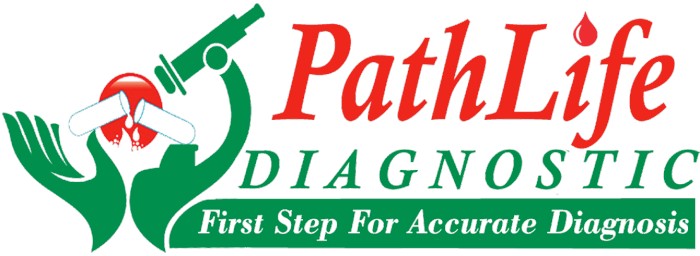I. Introduction
Maintaining good health is crucial for a long and happy life. Regular check-ups help catch issues early on, giving you the best chance to make lifestyle changes and avoid serious diseases. One such valuable test is the lipid profile test. This test plays a key role in checking your heart’s health by measuring different types of fats in your blood. These fats are important because they show if you’re at risk for heart disease. So, understanding what your lipid profile tells you is vital for both preventing and managing health concerns, especially those related to the heart.
II. Understanding the Lipid Profile Test
A. What is a Lipid Profile Test?
A lipid profile test is a blood test that measures the levels of fats like cholesterol and triglycerides in your blood. The main components checked include LDL (bad cholesterol), HDL (good cholesterol), triglycerides, and total cholesterol. The test helps doctors understand your risk for heart disease by showing if these fats are at healthy levels. If your lipid levels are off, it may indicate an increased risk of heart disease, making this test crucial.
B. How is the Test Conducted?
The lipid profile is checked through a simple blood test. Generally, you don’t eat or drink anything except water for 9 to 12 hours before the test. The procedure is quick—a health professional takes a small blood sample from your arm. Following these straightforward steps helps ensure accurate results, painting a clear picture of your lipid levels and, thus, your heart risk.
C. The Cardiovascular Connection
Heart disease is one of the leading health risks worldwide. Lipids like cholesterol and triglycerides play key roles in this. If there is too much LDL or too little HDL, plaques can build up in your arteries, increasing risk. By understanding lipid levels, we can manage and even prevent heart disease. Therefore, lipid profiles provide essential insight into your heart’s health.
D. Proactive Health Measures Through Testing
Recognizing risks early can change your health trajectory. The lipid profile test uncovers these risks, enabling tailored interventions. These might include medication, nutritional advice, or lifestyle changes. This proactive approach not only protects your heart but also improves your overall wellness, ensuring you’re on track for a healthier life.
III. Lifestyle and Dietary Changes for Better Lipid Control
Improving your lipid levels often starts with lifestyle and dietary changes. Small shifts in daily habits significantly impact your heart health.
A. Lifestyle Modifications
- Exercise regularly with activities you enjoy, like walking, cycling, or swimming.
- Manage stress through techniques such as meditation, yoga, or simple breathing exercises.
B. Dietary Adjustments
- Include heart-healthy foods like fruits, vegetables, whole grains, and nuts.
- Avoid trans fats and limit saturated fats found in junk foods and red meat.
- Opt for lean proteins like fish and plant-based sources, such as beans and lentils.
IV. Interpreting Lipid Profile Results for Better Health Outcomes
A. Correlation with Diabetes
Your lipid profile can affect diabetes management. High triglycerides and low HDL levels are common in people with diabetes, accelerating risks. Understanding and managing these levels helps control blood sugar more efficiently.
B. Link to Weight Management
Lipid levels offer clues for effective weight management. High cholesterol often signals poor dietary habits. Improving diet and increasing physical activity can lower cholesterol, aiding weight control.
C. Addressing Wellness Misconceptions
Many believe all fats are bad, but this isn’t true. Differentiating between healthy and unhealthy fat is crucial. This knowledge dispels myths and guides better dietary choices, enhancing wellness.
V. Guidelines for Regular Lipid Profile Testing
A. Frequency Considerations
How often you get a lipid profile test depends on your age, current health, and risk factors. Adults should consider a baseline test in their twenties. Beyond that, frequency varies. Consult your doctor to determine the best schedule.
B. Personalized Wellness Strategies
Crafting health plans relies on understanding diverse needs. Factors like age, genetic history, and lifestyle direct these plans. Regularly updating your lipid profile helps tailor these strategies effectively for comprehensive, long-term care.
VI. Innovations and Future of Lipid Testing
New advances in lipid testing are making these tests more convenient and insightful. Non-invasive tests, like skin or saliva tests, may one day replace regular blood draws. Also, using artificial intelligence to predict health outcomes from test results could lead to more personalized treatments. As technology evolves, lipid testing will likely play an even greater role in preventing heart disease and improving overall health.
VII. Promoting Generational Wellness through Lipid Testing
A. Understanding Family Health Patterns
Your family’s health history offers important clues. Tracking familial lipid levels helps anticipate potential risks and shape preventive strategies.
B. Long-Term Family Health Strategies
Regular lipid profile testing informs family-wide health decisions. By understanding shared trends, families can encourage healthy lifestyles, ensuring longevity and collective wellness.
VIII. Conclusion
Lipid profile tests are integral to understanding and maintaining heart health. They help identify risks and offer insights for improvements. Implementing proactive health measures, supported by lab results, empowers individuals to live healthier. Seeking education on your lipid levels and making informed lifestyle choices not only benefits you but can inspire family members to follow suit. Together, using these insights, we can create a healthier future for generations to come.

